Building Your Brand: 40 Facts, Stats, and Helpful Hints
Gain valuable insights and strategies for building a strong brand identity.

Cassie Viele
Published May 4, 2018
 One quick look at Forbes list of the most valuable brands gives you a clear view of what it looks like to have established dominant brand recognition. Apple, Google, Microsoft, Facebook, Amazon, McDonald s, Coca-Cola, and more have all carved out their place as household names and, for some, verbs ( I ll just google it or she facebooked me ).
One quick look at Forbes list of the most valuable brands gives you a clear view of what it looks like to have established dominant brand recognition. Apple, Google, Microsoft, Facebook, Amazon, McDonald s, Coca-Cola, and more have all carved out their place as household names and, for some, verbs ( I ll just google it or she facebooked me ).  Building a great (even verb-worthy!) brand is all about knowing and embracing who you are, who your competitors are, and who your audience is. Take the time to do your research, and it ll pay off in the long-run!
Building a great (even verb-worthy!) brand is all about knowing and embracing who you are, who your competitors are, and who your audience is. Take the time to do your research, and it ll pay off in the long-run! A Little Brand History...
- Once upon a time (think early 1900s) the biggest challenge manufacturers faced in making a sale was simply catching supply up to demand - what the customer actually wanted didn't matter all that much. As Henry Ford famously wrote, "Any customer can have a car painted any color that he wants, so long as it is black." (My Life and Work (1922))
- The 50s and 60s brought about a new era of striving to capture consumer preference - advertising suddenly mattered! Enter in the "Mad Men" of Madison Avenue, catchy slogans, and coordinated ad campaigns. (Forbes)
- A key belief ( that every product has something unique about it and the ad man s [or woman s!] job was to highlight that aspect ) behind developing a brand identity was offered up in 1961 by Rosser Reeves (the Don Draper of his day) - Unique Selling Proposition (USP). (Forbes)
- The USP idea was then upgraded to a more abstract concept called positioning by Jack Trout and Al Ries. Positioning asserts that marketing strategies should seek to fill a vacancy in consumers minds. Catchy slogans, product jingles, and well-thought out logos are great examples of attempts at positioning (For example, we all know that Motel 6 will leave the light on for us, we ll be lovin it at McDonald s, and we should just do it with Nike). (Forbes)
- Fast forward to present-day - today's manufacturers now strive to carve out and occupy their own "lane" in the minds of their consumers. Appealing to the customers' wants and needs is crucial to maintaining positioning. (Forbes)
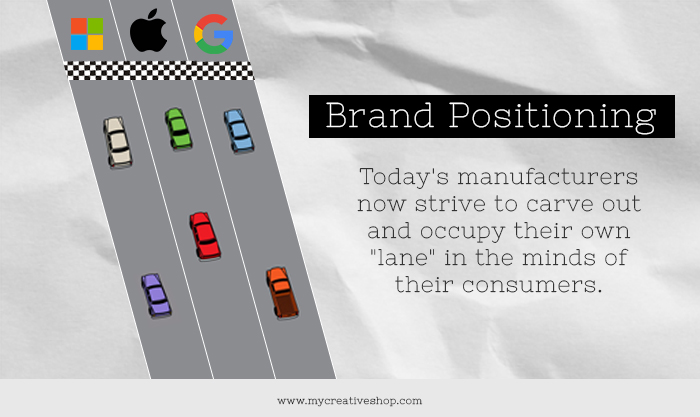 So how exactly do you go about staking your claim on that lane? By building a great brand and employing consistent branding, of course! Consistent branding is all about growing and protecting your reputation. Authenticity and humility are vital to fostering any sort of trust or loyalty your consumers want to be assured that the quality of your products or services will be consistent and that you ll make it right if you fall short.
So how exactly do you go about staking your claim on that lane? By building a great brand and employing consistent branding, of course! Consistent branding is all about growing and protecting your reputation. Authenticity and humility are vital to fostering any sort of trust or loyalty your consumers want to be assured that the quality of your products or services will be consistent and that you ll make it right if you fall short. Building Blocks of Branding
- Brand recognition as an easily identifiable and trusted name is key to tipping the purchase scales in your favor when surrounded by competition. (Harvard Business Review)
- You ll need at least 5-7 brand impressions if you want to be remembered. (Pam Moore)
- A shared value is a belief that both the brand and consumer have about a brand s higher purpose or broad philosophy. (Harvard Business Review)
- Give your brand its own look and feel carry that theme throughout, starting with your logo on up to clothing, posters, and signage. Make it unforgettable! (TSL Marketing)
- Color increases brand recognition by up to 80%! (University of Loyola)
- A well-established brand becomes the marketing campaign that never ends! (TSL Marketing)
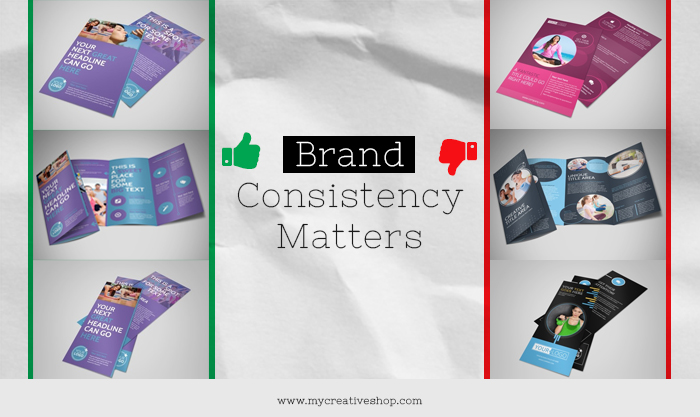
Know Your Audience
- Building a relationship between your brand and the consumer is always more about quality than quantity. In fact, too many low-quality interactions will negatively affect the consumer s perception of your brand, as anyone who s ever experienced multiple less than stellar customer service exchanges can attest to. (Harvard Business Review)
- Deliver an unexpectedly pleasant experience, and you ll win the hearts of 61% of consumers. (Cube)
- Want to cultivate relationships with brand-loyal customers? 64% of consumers say shared values are the primary reason they interact with a brand. (Harvard Business Review)
- Most (77%) customers aren t intentionally looking to be BFFs with your brand they just want to save money. Know your market and adjust your marketing strategy accordingly. (Harvard Business Review)
- 48% of consumers believe brands should know their preferences and introduce them to other products or services that may be interested in. (Cube)
- The ease with which your consumers can gain reliable information about your product and brand is key to what they really want simple purchase decisions! (Harvard Business Review)
- 52% of consumers believe it s the brand s responsibility to know when to communicate. (Cube)
- Too much is always too much bombarding consumers with marketing materials won t make them love you more it will just fill their recycling bin. (Harvard Business Review)
Social Media and Branding
In the Rob Reiner classic "The American President," Leo Solomon chastises lobbyist Sydney Ellen Wade that "politics is perception." The same is true for your company's brand - its worth is based solely on your consumers' opinions of your business. This is especially evident in social media interactions. Don't believe me? Just watch!- 85% of consumers in the US say they use social media, and 58% say they follow brands on social. (MarketingSherpa)
- Your brand's personality is what connects your product or service to your consumers. (Q2 2017 Sprout Social Index)
- Keep it real on social media - 86% of consumers are looking for honesty from the brands they follow on social, while 1 in 3 are seeking snarkiness ( la Wendy's). (Sprout Social)
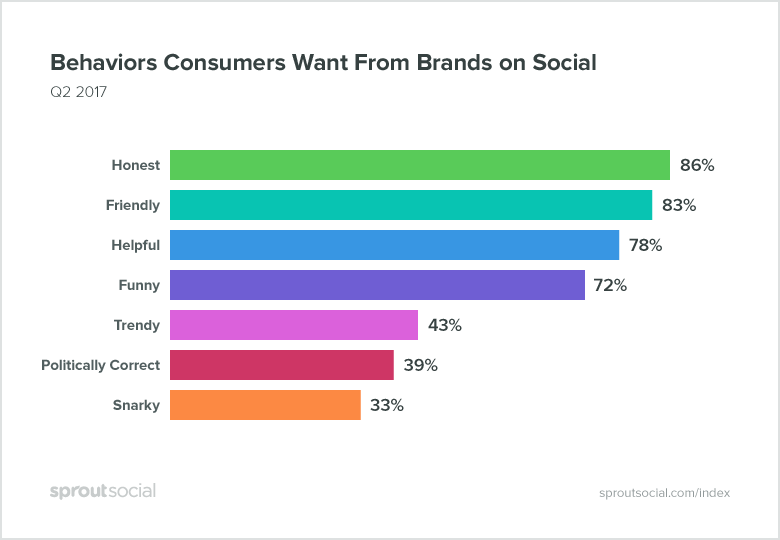
- Receive a complaint on Twitter? Don't leave them hanging; 72% of complainers expect a response within an hour. (Lithium)
- Check out our blog post on what you can learn by doing your own customer support.
- Respond to an inquiry or complaint within that golden hour and reap the benefits - 34% of followers will be likely to make more purchases, 43% are likely to get their friends and family on board, 38% will be more open to your advertising, and 42% will sing your praises on social media. (Lithium)
- On average, consumer messages to a brand on social media receive a response within ten hours; however, most consumers are only willing to wait for four. (Sprout Social)
- Get your social media customer service right and 71% of consumers will recommend you to their friends. (Ambassador)
- 72% of a brand's Twitter followers are also consumers of that brand. (BuzzStream)
- Don't be "that guy" - pay attention to your audience. 45% of customers point to "too much self-promotion" as the reason they stopped following a brand on social media. For 34% of consumers, automated messaging (auto-generated responses) was the kiss of death, and 19% can't stand poor use of hashtags (#thatguy). (BuzzStream)
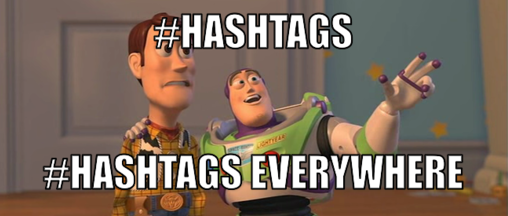
- Regardless of the platform, most consumers would like to see a post from you anywhere from two to five (but not more than six) times in a day. Don't be invisible, but don't annoy your audience either. (BuzzStream)
- Putting branded content out on your social media accounts? 67% of business execs say that meaningful, timely content will positively impact their opinion of the brand. Put out content that's all about you and you'll lose 71% of them. 85% of marketers say their goal in creating content is to build brand awareness. (The Economist Group)
- 96% of people who engage in online discussion about brands don't even follow those brands' owned profiles. (Brandwatch)
- Let's get visual - posts containing images, videos, or graphics are more likely to be shared, understood, and responded to than text alone. (HubSpot)
- Create an infographic that really hits the mark and you'll get three times the "likes" and "shares" than anything else out there.(HubSpot)
- Increase your tweets' clickthrough rate (CTR) by sharing links - 92% of all user interactions on Twitter come from link clicks. Clickable content is a great way to get the social conversation going! (HubSpot)
- Your social media "voice" (which should reflect your company's personality, culture, and industry, as well as your consumer demographic) can be your greatest asset. Be intentional and consistent in its development and usage. (Sprout Social)
Branding - Unplugged
A smart social media strategy plays a key role in establishing your brand, but don't neglect the offline world. A consistent and well thought-out print campaign is essential to truly building brand dominance. Think I'm living in the stone age? Check out my earlier post, "Don't be fooled - Print is still where it's at!" for proof.- When comparing digital ads to printed direct mail, consumer brand recall was 70% higher (75% v 44%) among the group exposed to direct mail than those who viewed only digital media. (Canada Post)
- Direct mail also utilizes 21% less cognitive energy to process than a digital ad (5.15 v 6.37), "suggesting that it is both easier to understand and more memorable." (Canada Post)
- 76% of consumers view the ads they receive in the mail as trustworthy, and establishing trust is key to building your brand. (MarketingSherpa)
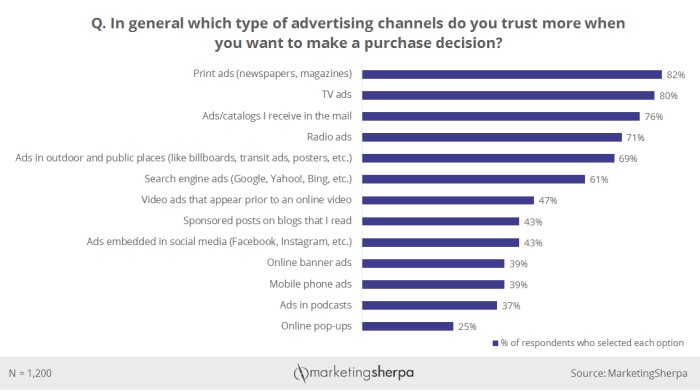
- The motivation response rate (that is, its ability to drive action) of printed direct mail is 20% higher than that of digital media (6.77 v 5.52) - a rate that even increases if you create a mailer that engages other senses besides touch and sight, like smell or sound, making your brand even more memorable. (Canada Post)
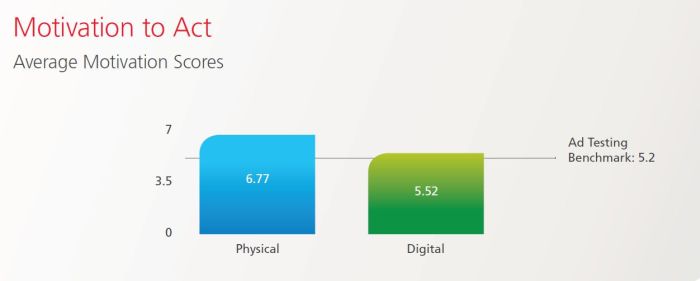
- Our brains get more (retention, recall, connection) out of printed media than they do from what they see on a screen. (Scientific American)
